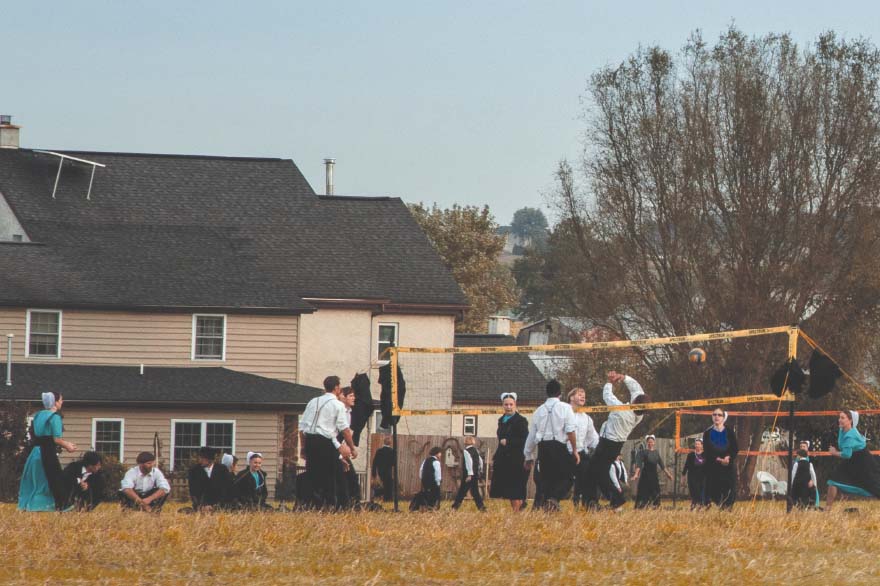Most Amish weddings take place at this time of year, from late October through December, after the autumn harvest. Traditionally, the days for weddings are Tuesdays and Thursdays, so there is time in between to get ready for and clean up after each. Even so, it can get pretty busy during the “wedding season”, with some Amish going to two or three weddings in one day.

A wedding is a particularly joyous occasion, for two baptized members of the church are joining in marriage, continuing the faith, and starting a new family together. While parents do not select who their children will marry, approval must be given, and the deacon usually acts as the go-between. At a church service after fall communion, the couples planning to marry are “published”, and announced in front of the congregation. But much preparation, mainly by the bride’s parents has already begun, including the planting in early summer of several hundred stalks of celery, an important part of any Lancaster Amish wedding feast.
The church service itself, held in the home of the bride’s parents, is similar to the regular Sunday service. But the focus is on the serious step of marriage, for in the Amish church, there is no divorce. The sermons and Bible passages emphasize the relationship between man and wife. When it is time for the vows, the couple comes forward. Each is asked if they will remain together until death, and if they will be loyal and care for each other during adversity, affliction, sickness, and weakness. The minister then takes the couples’ hands in his and, wishing them the blessing and mercy of God, tells them to “Go forth in the Lord’s name. You are now man and wife”.
After the service, the benches used for the service are put together to form tables. During the wedding meal, the couple sits at the corner of two tables called the “eck”, with their attendants on either side, and the unmarried boys sitting opposite the girls. The meal itself is a feast indeed, including “roast,” a mixture of bread filling and chicken, mashed potatoes, coleslaw, apple sauce, and creamed celery. Some leafy celery stalks are also put in jars to decorate the table. Among the desserts are pies, doughnuts, fruit, and pudding. There are usually several wedding cakes, some made by the women, but often one from a bakery as well. They are usually eaten later in the day. It will take several seatings to feed 200, 300, or more guests.
In the afternoon, the young people have a singing, and soon it is time for the evening meal, for those who have stayed through the day. For the seating of the young people, the bride makes a list of couples who are dating or interested in each other. As their names are called, they take their place at the table. On the bride’s side are the married or “soon-to-be” married couples, while the groom’s side has the other couples. Hymn-singing again follows the meal, with the “faster hymns” predominating this time.
After spending the night at the bride’s home, the newlyweds awake the next day to begin helping with the clean-up from the day before.
The couple will spend upcoming weekends visiting relatives. Sometimes five or six houses are visited between a Friday and Sunday night. Wedding gifts are usually given to them at this time.
By the spring, the couple is usually ready to set up housekeeping in a home of their own. The groom would be growing his beard, a sign of marriage in the community. As in every culture, a wedding is a joyous celebration reflecting commitments, a new position in the community, and a new relationship as man and wife.
— Edward Blanchette

